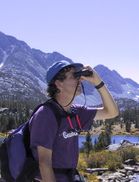 Imagine Earth as a button. I don’t mean you’re going to sew it onto your shirt. But imagine the planet Earth shrunk to the size of a button. (Of course Earth is not flat like a button but we’re giving our shrunken Earth the same diameter as a shirt button.) Go ahead and draw a circle around a shirt button. Call it “Earth.” Suppose you wanted to draw Jupiter, the largest planet, at the same scale as this micro-Earth. That means you’re going to shrink it to the same fraction of its original size as our button-Earth. What size would little Jupiter be? One way to find out would be to calculate how many times bigger the real Jupiter is than the real Earth. Earth’s diameter is about 8,000 miles (13,000 kilometers). Jupiter’s is about 88,000 miles (143,000 km). Divide the size of Jupiter by the size of Earth to see that Jupiter is about 11 times bigger. So, since Jupiter’s diameter is 11 times that of Earth’s, put 11 buttons in a line to show the diameter of Jupiter. Then draw the circle that represents Jupiter. If you don’t have 11 buttons, just look at the picture. Did you think the Earth was a big place? Look at it compared with Jupiter! But what about the sun? The sun’s diameter is about 865,000 miles (1,400,000 km). That means it’s almost 10 times bigger than Jupiter. Can you find a way to draw a circle 10 times the size of our Jupiter? We’ve drawn part of it for you, on the same scale as our button-sized Earth. On the picture, it’s labeled “our arc.” (An arc is part of a circle.) Looking at the arc, you can imagine the rest of the circle and compare the sun to Jupiter and Earth. A minute ago, you thought Jupiter was big. Now it looks shrimpy compared to the sun! But is the sun really gigantic? Do some research to find out the size of a red giant star like the strangely named Betelguese (pronounced “beetle-juice.”) Figure out what it looks like compared to our sun, which is a medium-sized star. You may be amazed at the difference. And you thought the sun was big! Is anything truly big? Is anything truly small? Or does that depend on what it’s being compared to? 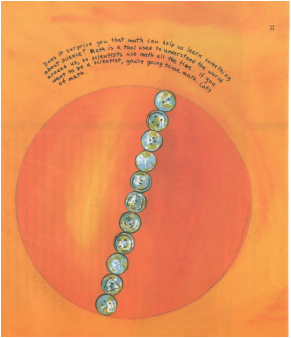 If the Earth were the size of a button, Jupiter’s diameter would equal eleven buttons because the diameter of Jupiter is eleven times that of Earth. If the Earth were the size of a button, Jupiter’s diameter would equal eleven buttons because the diameter of Jupiter is eleven times that of Earth. Both images are by Marissa Moss, the illustrator of David M Schwartz's book, G is for Googol. 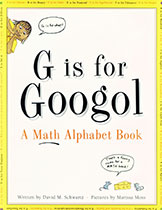 G is for Googol: A Math Alphabet Book is a wonder-filled romp through the world of mathematics. For more information, click here. David Schwartz is a member of iNK's Authors on Call and is available for classroom programs through Field Trip Zoom, a terrific technology that requires only a computer, wifi, and a webcam. Click here to find out more. MLA Citation
Schwartz, David M. "If the Earth Were a Button." Nonfiction Minute, iNK Think Tank, 16 Jan. 2018, www.nonfictionminute.org/the-nonfiction-minute/ If-the-Earth-Were-a-Button.
0 Comments
September 1, 1852, British astronomer Richard Carrington was sketching the pattern of sunspots being projected from his telescope onto a white panel. Suddenly, a rare white-light solar flare outshone the rest of the image. Trouble was on its way! The revolving molten core of our Earth generates a magnetic field – the magnetosphere – that not only orients our compasses but protects us from the sun’s lethal radiation. Intense charged particles from the sun are magnetically bent around the earth. Some follow magnetic lines into the poles and light up the arctic and antarctic skies as aurorae. Periodically, during times of intense surface disturbance, giant flares of energy can burst out of the sun: CMEs, coronal mass ejections. They’re directional and they seldom hit earth. When they do, the most powerful can punch through our magnetosphere. On September 2, 1852, Carrington’s flare energy reached the earth and danced along the copper wires of our (then) new telegraph system. Hundreds of miles of wire burst into flames. Telegraph offices burned down, operators at their keys were knocked back by severe shocks, instruments and switches melted. For two days the telegraph system that wasn’t destroyed sent nonsense. Then spectacular aurorae that lit up the skies, they, finally, proved that the sun’s energy was the aurora’s source. Aurorae were seen all over the world, even near the equator. After two days the effects ceased. Could it happen again? It has. In 1882, a flare melted telegraph equipment in Chicago. In 1902, solar energy disrupted the Atlantic telegraph cable and shut down Swiss electric trollies. In 1940, hundreds of miles of American telegraph and telephone lines were destroyed. A solar flare in 1989 almost forced the Space Shuttle Discovery to return to earth early and knocked out Quebec’s electricity; only quick action in New Jersey, where a major transformer melted, saved the United States’ east coast from a long blackout. In 2003, a powerful flare destroyed or disabled many satellites, damaged instruments on our Mars orbiter, and sent the crew of the International Space Station into its flare-shielded module. In 2005, our GPS navigation satellite constellation was knocked out for 10 minutes. All the life and energy we have comes from the sun. But that energy, itself, is dangerous. We’re partially protected by our magnetosphere. Hope for the best and reach for the sunscreen. 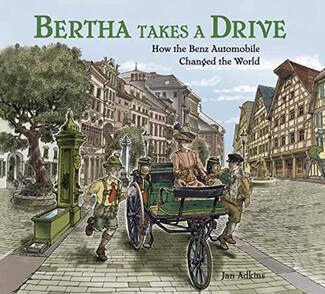 Adkins new book is about the first drive in an automobile. The wife of the inventor took her kids to see their grandparents. 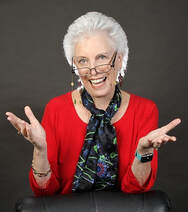 Think you might like to be a helicopter pilot? If so, here’s what the U.S. Flight Aptitude Selection Test for helicopter pilots says: “Helicopter pilots must pass some of the most demanding physical tests of any job in the military. To be accepted for pilot training, applicants must have excellent vision and be in top physical condition. They must have very good eye-hand-foot coordination and have quick reflexes.” A sense of balance is also extremely important because sometimes instruments alone are not enough to keep a helicopter oriented properly in the air. Pilots may have to make very subtle corrections. So here’s a test for balance. Be forewarned. Not many people can do this, maybe one in twenty. 1. Stand at attention. 2. Make two fists and extend your arms straight down by your sides. Point your index fingers to the ground. 3. Close your eyes. 4. Bend one leg back at the knee so that your lower leg is parallel to the floor and you are standing on one foot. Don’t let your foot droop. You must maintain your knee at a right angle. 5. Keep your eyes closed and hold this position for ninety seconds. 6. Try not to shake. I learned about this from a Scotsman who told me about this test to qualify for the British Royal Air Force. He couldn't pass it, nor could I. In fact, no one I knew could rise to the helicopter pilot challenge except a Navy pilot in my family. He held the position perfectly for two minutes. Solid like a rock. No problem. It’s clear that when it comes to certain skills not everyone is equal. Some people are not even close. So very few people are in the running to become helicopter pilots. You're probably not one of them but this may change with training. 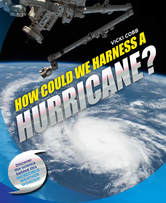 Vicki Cobb is a former science teacher with a M.A. in secondary school science. She is also the founder and president of iNK Think Tank, the group that is producing The Nonfiction Minute. Thanks, Vicki! Check out How Could We Harness a Hurricane?. To find out more about this book and other books that Vicki has written, click here. Vicki Cobb is a member of iNK's Authors on Call and is available for classroom programs through Field Trip Zoom, a terrific technology that requires only a computer, wifi, and a webcam. Click here to find out more. MLA 8 CItation
Cobb, Vicki. "Take the Helicopter Pilot Challenge." Nonfiction Minute, iNK Think Tank, 4 Jan. 2018, www.nonfictionminute.org/ Take-the-Helicopter-Pilot-Challenge.  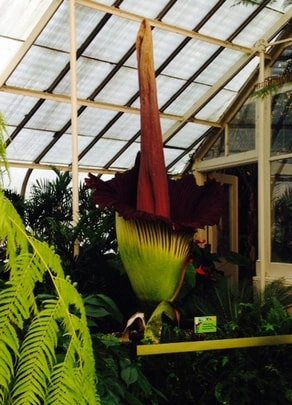 Regular visiting hours are over at the Buffalo Botanical Gardens, but the line to see Morty reaches out the door. It’s an event that comes once in a decade, so I’m happy to wait for my chance to see, and smell, what’s inside. A year ago the Botanical Gardens acquired corms or bulbs of a tropical plant called the corpse flower. These aren’t little tulip bulbs you hold in your hand. The corpse flower corm weighs 120 pounds and looks like a giant potato. A corm that big needs a lot of energy to grow, so, it spends several months dormant underground. When the first hint of green peeks through the soil, it’s a guessing game as to what it will look like. Most of the time, the corpse flower will send up a slender shoot and one complex leaf that looks like a tree canopy. Through photosynthesis, this leaf will provide energy that will be stored in the corm. When there is enough energy stored up, Morty will flower. And that’s what I’m excited to witness. Weaving my way through displays of cactus, palms, and banana trees, I wonder if someone forgot to take the trash out. The odor of rotting meat wrinkles my nose, and I realize why Morty is called a corpse flower. As we move closer, the air grows thicker. This plant has been dumpster diving. The stink Morty sends forth is the plant’s way to attract pollinators in its native jungle of Sumatra. The flower only lasts a day or two, so the scent has to be pungent enough to quickly draw in dung beetles and carrion flies that will collect the pollen and distribute it to other plants before it wilts. It’s curiosity that lures me in. I round the corner and catch my first glimpse of the stinker. Since it poked out of the ground it has grown five to six inches every day, and now Morty’s seven-foot spire, called a spadix, towers over me. I have to step back to catch the entire plant in my camera lens. Like a wicked witch’s collar, Morty wears a single pleated, blood red flower petal wrapped around the spadix. By midnight the flower will be fully opened and have reached maximum reek. I click more pictures and take a deep breath. It will be a long time before Morty blooms again, and I want to remember every smelly detail. 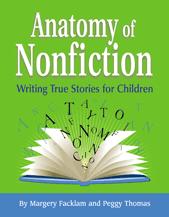 Peggy Thomas certainly is a Curiosity Queen. You'll recall that her last Nonfiction Minute showed her taking an elephant's temperature -- not an easy task. Her book Anatomy of Nonfiction shows other authors how to write about real events. To read about some of Peggy's other adventures and to find out about her books, visit her website. MLA 8 Citation
Thomas, Peggy. "Morty Makes a Stink." Nonfiction Minute, iNK Think Tank, 9 01 2018, www.nonfictionminute.org/the-nonfiction-minute/Morty-Makes-a-Stink. 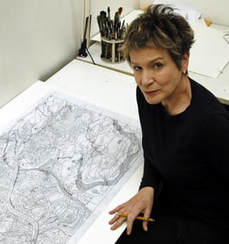 You’ve probably heard about Charles Lindbergh, the first pilot to fly across the Atlantic. But did you ever hear about Cal Rodgers? Only eight years after the Wright brothers flew the first heavier-than-air machine, newspaper tycoon William Hearst offered a $50,000 prize to the first to fly across the continent in less than 30 days. Although Cal Rodgers had just learned to fly, he was ready. “He’ll need every atom of courage..,” Wilbur Wright had said of any man who attempted to win the prize. The nation had not a single airport, and there were no navigation aids or repair places. . To help him, a train carrying a second plane, spare parts, a crew of mechanics, Cal’s wife Mabel, his mother, and reporters was rented by a company producing a grape drink named Vin Fiz. In exchange, Cal named his airplane after it, and would scatter Vin Fiz promotional leaflets from the sky— the first aerial ad campaign. On September 17, 1911, Cal took off from Brooklyn, made a sweep over Manhattan and headed for New Jersey, where the train, and an enormous crowd, was waiting. The next morning, right after takeoff he tried to avoid some power lines, hit a tree, and plunged into a chicken coop. Feathers floated as he emerged from a tangle of wires, splintered wood, and torn fabric. Head bleeding, cigar clenched between his teeth, he muttered, “Oh, my beautiful airplane.” They rebuilt the Vin Fiz, and a few days later he was again airborne. Stopovers were frequent, as were brushes with death. The plane struck telegraph wires; it piled into a barbed-wire fence (demolished again); and landing in Indiana, Cal was attacked by a bull. He became the first pilot to fly in a thunderstorm. But the Vin Fiz buzzed on. When he reached Chicago, other contenders had dropped out. Cal realized that he wasn’t going to make it to the west coast in 30 days. But he pressed on… To avoid the Rocky Mountains, he flew south over Texas, then west. By the time he reached California, after a dozen crashes, his plane had been rebuilt so often that little remained of the original. A month later, after still another crash and in yet another rebuilt plane, he finally reached the Pacific, greeted by 50,000 spectators Tragically, Cal’s luck ran out. A few months later, he flew into a flock of seagulls, and plunged to his death. But he did it— he became the first pilot to fly across the American continent. 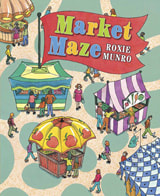 In eleven intricately drawn mazes, eight vehicles, each carrying a different product, are on their way to the city. Fish, apples, dairy products, corn, vegetables, flowers, eggs, and baked goods all travel through colorful and minutely detailed landscape mazes to reach the city farmer's market. Information on all of the products and their journeys is included, along with answers to all of the mazes. For additional fun, kids are challenged to look for objects hidden on each spread. For more information, on Roxie's Market Maze, click here. MLA 8 Citation
Munro, Roxie. "A Transcontinental First." Nonfiction Minute, iNK Think Tank, 22 Jan. 2018, www.nonfictionminute.org/the-nonfiction-minute/ a-transcontinental-first. |
*NEWS
|
For Vicki Cobb's BLOG (nonfiction book reviews, info on education, more), click here: Vicki's Blog
The NCSS-CBC Notable Social Studies Committee is pleased to inform you
that 30 People Who Changed the World has been selected for Notable Social Studies Trade Books for Young People 2018, a cooperative project of the National Council for the Social Studies (NCSS) & the Children’s Book Council
Categories
All
Abolitionists
Adams Janus
Adaptation
Adaptations
Adkins Jan
Advertising
Aerodynamics
Africa
African American History
African Americans
Africa West
Agriculture
Aircraft
Air Pilots
Air Pressure
Air Travel
Albee Sarah
Alchemy
Alligators
Allusion
American History
American Icons
Amphibians
Amundsen Roald
Anatomy
Ancient
Ancient Cultures
Anderson Marian 1897-1993
Animal Behavior
Animal Experimentation
Animal Intelligence
Animals
Animation
Antarctica
Ants
Apache Indians
Apes
April Fool's Day
Architecture
Argument
Arithmetic
Art
Art Deco
Artists
Arts
Asia
Astronauts
Astronomy
Athletes
Atomic Theory
Audubon Societies
Authors
Autobiography
Automobiles
Aviation
Awards
Bacteria
Baseball
Battuta Ibn
Bears
Beatles
Beavers
Bees
Biodegradation
Biography
Biology
Biomes
Biomimicry
Biplanes
Birds
Black Death
Black History
Blindness
Blizzards
Bombs
Bonaparte Napoleon
Boone Daniel
Botany
Brazil
Bridges
Brill Marlene Targ
Brooklyn Bridge
Brown John
Buffaloes
Building Materials
Butterflies
Caesar
Caesar Julius
Caissons
Calculus
Calendars
Cannibal
Capitals
Caravaggio
Carbon Dioxide
Carnivores
Carson Mary Kay
Cartoons & Comics
Carving (Decorative Arts)
Cascade Range
Castaldo Nancy
Castles
Castrovilla Selene
Cathedrals
Cats
Caves
Celts
Cemeteries
Chemistry
Children's Authors
Child Welfare
China
Choctaw Indians
Christmas
Chronometers
Cicadas
Cinco De Mayo
Ciphers
Circle
Citizenship
Civil Rights
Civil Rights Movements
Civil War
Civil War - US
Climate
Climate Change
Clocks And Watches
Clouds
Cobb Vicki
COBOL (Computer Language)
Code And Cipher Stories
Collard III Sneed B.
Collectors And Collecting
Color
Commerce
Communication
Competition
Compilers
Composers
Computers
Congressional Gold Medal
Consitution
Contests
Contraltos
Coolidge Calvin
Cooling
Corms
Corn
Counterfeiters
Covid-19
Crocodiles
Cryptography
Culture
Darwin Charles
Declaration Of Independence
Decomposition
Decompression Sickness
Deep-sea Animals
Deer
De Medici Catherine
Design
Detectives
Dickens Charles
Disasters
Discrimination
Diseases
Disney Walt
DNA
Dogs
Dollar
Dolphins
Douglass Frederick 1818-1895
Droughts
Dr. Suess
Dunphy Madeleine
Ear
Earth
Earthquakes
Ecology
Economics
Ecosystem
Edison Thomas A
Education
Egypt
Eiffel-gustave-18321923
Eiffel-tower
Einstein-albert
Elephants
Elk
Emancipationproclamation
Endangered Species
Endangered-species
Energy
Engineering
England
Englishlanguage-arts
Entomology
Environmental-protection
Environmental-science
Equinox
Erie-canal
Etymology
Europe
European-history
Evolution
Experiments
Explorers
Explosions
Exports
Extinction
Extinction-biology
Eye
Fairs
Fawkes-guy
Federalgovernment
Film
Fires
Fishes
Flight
Floods
Flowers
Flute
Food
Food-chains
Foodpreservation
Foodsupply
Food-supply
Football
Forceandenergy
Force-and-energy
Forensicscienceandmedicine
Forensic Science And Medicine
Fossils
Foundlings
France
Francoprussian-war
Freedom
Freedomofspeech
French-revolution
Friction
Frogs
Frontier
Frontier-and-pioneer-life
Frozenfoods
Fugitiveslaves
Fultonrobert
Galapagos-islands
Galleys
Gametheory
Gaudi-antoni-18521926
Gender
Generals
Genes
Genetics
Geography
Geology
Geometry
Geysers
Ghosts
Giraffe
Glaciers
Glaucoma
Gliders-aeronautics
Global-warming
Gods-goddesses
Gold-mines-and-mining
Government
Grant-ulysses-s
Grasshoppers
Gravity
Great-britain
Great-depression
Greece
Greek-letters
Greenberg Jan
Hair
Halloween
Handel-george-frederic
Harness Cheryl
Harrison-john-16931776
Health-wellness
Hearing
Hearing-aids
Hearst-william-randolph
Henry-iv-king-of-england
Herbivores
Hip Hop
History
History-19th-century
History-france
History-world
Hitler-adolph
Hoaxes
Holidays
Hollihan Kerrie Logan
Homestead-law
Hopper-grace
Horses
Hot Air Balloons
Hot-air-balloons
Housing
Huguenots
Human Body
Hurricanes
Ice
Icebergs
Illustration
Imagery
Imhotep
Imperialism
Indian-code-talkers
Indonesia
Industrialization
Industrial-revolution
Inquisition
Insects
Insulation
Intelligence
Interstatecommerce
Interviewing
Inventions
Inventors
Irrational-numbers
Irrigation
Islands
Jacksonandrew
Jazz
Jeffersonthomas
Jefferson-thomas
Jemisonmae
Jenkins-steve
Jet-stream
Johnsonlyndonb
Jokes
Journalism
Keeling-charles-d
Kennedyjohnf
Kenya
Kidnapping
Kingmartinlutherjr19291968
Kingmartinlutherjr19291968d6528702d6
Kings-and-rulers
Kings Queens
Kings-queens
Koala
Labor
Labor Policy
Lafayette Marie Joseph Paul Yves Roch Gilbert Du Motier Marquis De 17571834
Landscapes
Languages-and-culture
Law-enforcement
Layfayette
Levers
Levinson Cynthia
Lewis And Clark Expedition (1804-1806)
Lewis Edmonia
Liberty
Lift (Aerodynamics)
Light
Lindbergh Charles
Liszt Franz
Literary Devices
Literature
Lizards
Longitude
Louis XIV King Of France
Lumber
Lunar Calendar
Lynching
Macaws
Madison-dolley
Madison-james
Madison-james
Mammals
Maneta-norman
Maneta-norman
Marathon-greece
Marine-biology
Marine-biology
Marines
Marsupials
Martial-arts
Marx-trish
Mass
Massachusetts-maritime-academy
Mass-media
Mastodons
Mathematics
May-day
Mcclafferty-carla-killough
Mcclafferty-carla-killough
Mckinley-william
Measurement
Mechanics
Media-literacy
Media-literacy
Medicine
Memoir
Memorial-day
Metaphor
Meteorology
Mexico
Mickey-mouse
Microscopy
Middle-west
Migration
Military
Miners
Mississippi
Molasses
Monarchy
Monsters
Montgomery
Montgomery-bus-boycott-19551956
Montgomery-heather-l
Monuments
Moon
Moran-thomas
Morsecode
Morsesamuel
Moss-marissa
Moss-marissa
Motion
Motion-pictures
Mummies
Munro-roxie
Munro-roxie
Musclestrength
Museums
Music
Muslims
Mythologygreek
Nanofibers
Nanotechnology
Nathan-amy
Nathan-amy
Nationalfootballleague
Nationalparksandreserves
Nativeamericans
Native-americans
Native-americans
Naturalhistory
Naturalists
Nature
Nauticalcharts
Nauticalinstruments
Navajoindians
Navigation
Navy
Ncaafootball
Nervoussystem
Newdeal19331939
Newman-aline
Newman-aline
Newton-isaac
New-york-city
Nobelprizewinners
Nomads
Nonfictionnarrative
Nutrition
Nylon
Nymphs-insects
Oaths Of Office
Occupations
Ocean
Ocean-liners
Olympics
Omnivores
Optics
Origami
Origin
Orphans
Ottomanempire
Painters
Painting
Paleontology
Pandemic
Paper-airplanes
Parksrosa19132005
Parrots
Passiveresistance
Patent Dorothy Hinshaw
Peerreview
Penguins
Persistence
Personalnarrative
Personification
Pets
Photography
Physics
Pi
Pigeons
Pilots
Pinkertonallan
Pirates
Plague
Plains
Plainsindians
Planets
Plantbreeding
Plants
Plastics
Poaching
Poetry
Poisons
Poland
Police
Political-parties
Pollen
Pollution
Polo-marco
Populism
Portraits
Predation
Predators
Presidentialmedaloffreedom
Presidents
Prey
Prey-predators
Prey-predators
Prime-meridian
Pringle Laurence
Prohibition
Proteins
Protestandsocialmovements
Protestants
Protestsongs
Punishment
Pyramids
Questioning
Radio
Railroad
Rainforests
Rappaport-doreen
Ratio
Reading
Realism
Recipes
Recycling
Refrigerators
Reich-susanna
Religion
Renaissance
Reproduction
Reptiles
Reservoirs
Rheumatoidarthritis
Rhythm-and-blues-music
Rice
Rivers
Roaringtwenties
Roosevelteleanor
Rooseveltfranklind
Roosevelt-franklin-d
Roosevelt-theodore
Running
Russia
Safety
Sanitation
Schwartz David M
Science
Scientificmethod
Scientists
Scottrobert
Sculpture
Sculpturegardens
Sea-level
Seals
Seals-animals
Secretariesofstate
Secretservice
Seeds
Segregation
Segregationineducation
Sensessensation
September11terroristattacks2001
Seuss
Sextant
Shackletonernest
Shawneeindians
Ships
Shortstories
Silkworms
Simple-machines
Singers
Siy Alexandra
Slavery
Smuggling
Snakes
Socialchange
Social-change
Socialjustice
Social-justice
Socialstudies
Social-studies
Social-studies
Sodhouses
Solarsystem
Sound
Southeast-asia
Soybean
Space Travelers
Spain
Speech
Speed
Spiders
Spies
Spiritualssongs
Sports
Sports-history
Sports-science
Spring
Squirrels
Statue-of-liberty
STEM
Storms
Strategy
Sugar
Sumatra
Summer
Superbowl
Surgery
Survival
Swanson-jennifer
Swinburne Stephen R.
Synthetic-drugs
Taiwan
Tardigrada
Tasmania
Tasmanian Devil
Tasmanian-devil
Technology
Tecumsehshawneechief
Telegraph-wireless
Temperature
Tennis
Terrorism
Thomas Peggy
Thompson Laurie Ann
Time
Titanic
Tombs
Tortoises
Towle Sarah
Transcontinental-flights
Transportation
Travel
Trees
Trung Sisters Rebellion
Tundra
Turnips
Turtles
Typhoons
Underground Railroad
Us-environmental-protection-agency
Us History
Us-history
Ushistoryrevolution
Us History Revolution
Us-history-war-of-1812
Us Presidents
Ussupremecourtlandmarkcases
Vacations
Vaccines
Vangoghvincent
Vegetables
Venom
Vietnam
Viruses
Visual-literacy
Volcanoes
Voting-rghts
War
Warne-kate
Warren Andrea
Washington-dc
Washington George
Water
Water-currents
Wax-figures
Weapons
Weather
Weatherford Carole Boston
Whiting Jim
Wildfires
Winds
Windsor-castle
Wolves
Woman In History
Women
Women Airforce Service Pilots
Women-airforce-service-pilots
Womeninhistory
Women In History
Women-in-science
Women's History
Womens-roles-through-history
Wonder
Woodson-carter-godwin-18751950
World-war-i
World War Ii
World-war-ii
Wright Brothers
Writing
Writing-skills
Wwi
Xrays
Yellowstone-national-park
Zaunders Bo
ArchivesMarch 2021
February 2021
January 2021
December 2020
November 2020
October 2020
September 2020
June 2020
May 2020
April 2020
March 2020
February 2020
January 2020
December 2019
October 2019
September 2019
August 2019
July 2019
May 2019
April 2019
March 2019
February 2019
January 2019
December 2018
November 2018
September 2018
June 2018
May 2018
April 2018
March 2018
February 2018
January 2018
December 2017
November 2017
October 2017
September 2017
March 2017
The NONFICTION MINUTE, Authors on Call, and. the iNK Books & Media Store are divisions of iNK THINK TANK INC.
a 501 (c) (3) nonprofit corporation. To return to the iNK Think Tank landing page click the icon or the link below. :
http://inkthinktank.org/
For more information or support, contact thoughts@inkthinktank.org
For Privacy Policy, go to
Privacy Policy
© COPYRIGHT the Nonfiction Minute 2020.
ALL RIGHTS RESERVED.
This site uses cookies to personalize your experience, analyze site usage, and offer tailored promotions. www.youronlinechoices.eu
Remind me later
Archives
March 2023
February 2023
January 2023
December 2022
November 2022
October 2022
September 2022
June 2022
May 2022
April 2022
March 2022
February 2022
January 2022
December 2021
November 2021
September 2021
April 2021
March 2021
February 2021
November 2020
October 2020
September 2020
June 2020
May 2020
April 2020
March 2020
February 2020
January 2020
October 2019
August 2019
July 2019
May 2019
April 2019
December 2018
September 2018
June 2018
May 2018
March 2018
February 2018
January 2018
December 2017
November 2017
October 2017
September 2017




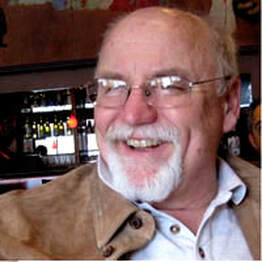
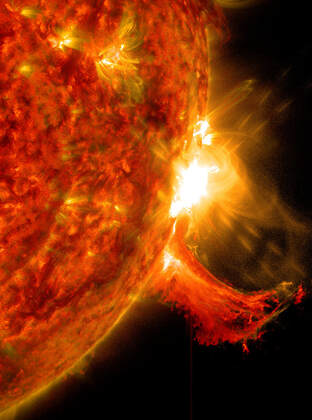

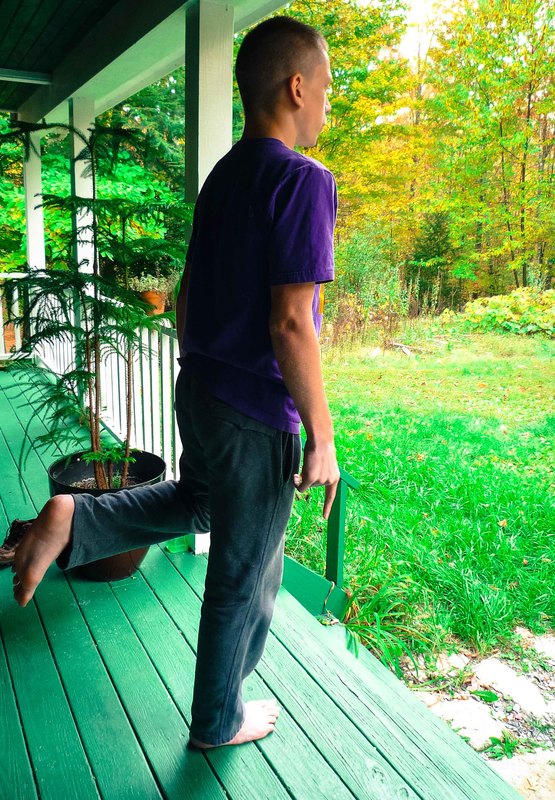




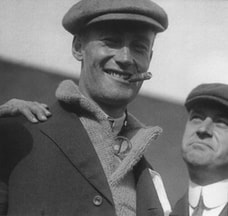






 RSS Feed
RSS Feed
